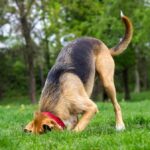It’s hard to believe that we’re down to the last three months of yet another year, and that it’s a leap year (i.e. Olympics and elections) again. It’s also that time of year when the seasons change from harsh to mild no matter where you are in the world.
In the Northern Hemisphere, summer has become autumn. In the Southern, winter has become spring. Whether the days are getting longer or shorter for you, it’s an ideal season to increase your walking time with your dog, or re-discover the joys of walking if you’ve been avoiding it — and you can do both in honor of National Walk Your Dog Week.
If you have a dog, you can’t avoid The Walk. It’s the most important activity you and your canine friend can do together — but your dog isn’t the only one who benefits from it.
Now I know that not everyone can walk their dog. Some people absolutely don’t have time to do it, while others are physically unable. I’d question whether it’s really a lack of time with that first group, because if you want to make time to walk your dog, you can. But if you do have health reasons that keep you from the walk, you should at least be able to arrange for a professional walker or a friend, neighbor, or family member to take care of the dog duties for you.
While you’ll miss out on the bonding and exercise aspects of the walk, you’ll at least receive the benefit of a better-behaved, calmer dog. But assuming that you’re ready and able to walk your dog and that you have the time to do it at least twice a day if not more often, here are the four main benefits for both of you.
Four Benefits of Walking Your Dog
Exercise
This is the cornerstone of my canine fulfillment formula but, more importantly, it’s also one of the keys to being a healthy human. Regular exercise can help reduce the risk of diabetes and heart disease, strengthen your bones and muscles, and improve your mental health and mood, among many other benefits.
It can also help to control your weight, and your dog’s weight. The greatest thing about walking is that it doesn’t require special equipment beyond a comfortable pair of shoes, and you can go at your own pace and distance. Of course, the more you do it, the easier it gets to go farther and longer.
Familiarization
If you walk in your neighborhood every day, you’ll begin to get a broader sense of the community you inhabit. You may start to see the same neighbors, delivery people, and so on, and you’ll begin to notice little things you never see from the car — like those garden gnomes in one yard or the sidewalk square that was signed wet by an entire family in 1979.
As you get to know the people and animals in the neighborhood, so will your dog, and it will help to build her confidence and make her more social. She will develop a healthy sense of territory that’s shared with other dogs, get a sense of the smells and sights around your house, and know when something or someone strange has intruded with just a sniff.
Bonding
There is no better bonding activity for a Pack Leader and their dog than the walk. It establishes communication between the two, as well as trust. This is where your calm, assertive energy can really have a huge positive effect on your dog’s behavior. If you’re not tense or worried, then your dog won’t have any reason to be. He’ll learn to associate your walks with that calm, happy place.
Since your dog is engaged in the walk, this is also the ideal time for you to observe him in action and learn his personality — how he approaches things, what he reacts to, what entices him and what scares him. As you get a better idea of your dog’s regular moods and reactions, you’ll also develop a really good sense of when something is wrong.
This can be very important for spotting medical issues, because most of the time our dogs will try to hide these from us. To them, illness can mean getting thrown out of the pack, at least in the way they perceive the world. They can try to cover up things like a limp or vomiting — but they can’t cover up a change in energy or enthusiasm.
Relaxation
Finally, the walk is a time to get outside in nature — or as close as you can get to it in a big city — and just enjoy life in the moment. Try to experience what’s around you without thinking about it in words. The exercise will help drain tension and excess energy from your body, and trying to notice as many things around you without describing them will help you learn how to meditate.
This will help you get in touch with your instincts, which will also help you bond with your dog. After all, she spends every moment of her life in the world of pure instinct!
So remember: If you’re not walking your dog every day, not only is he not getting the benefits of the experience, but neither are you.
Stay calm — and keep walking!











